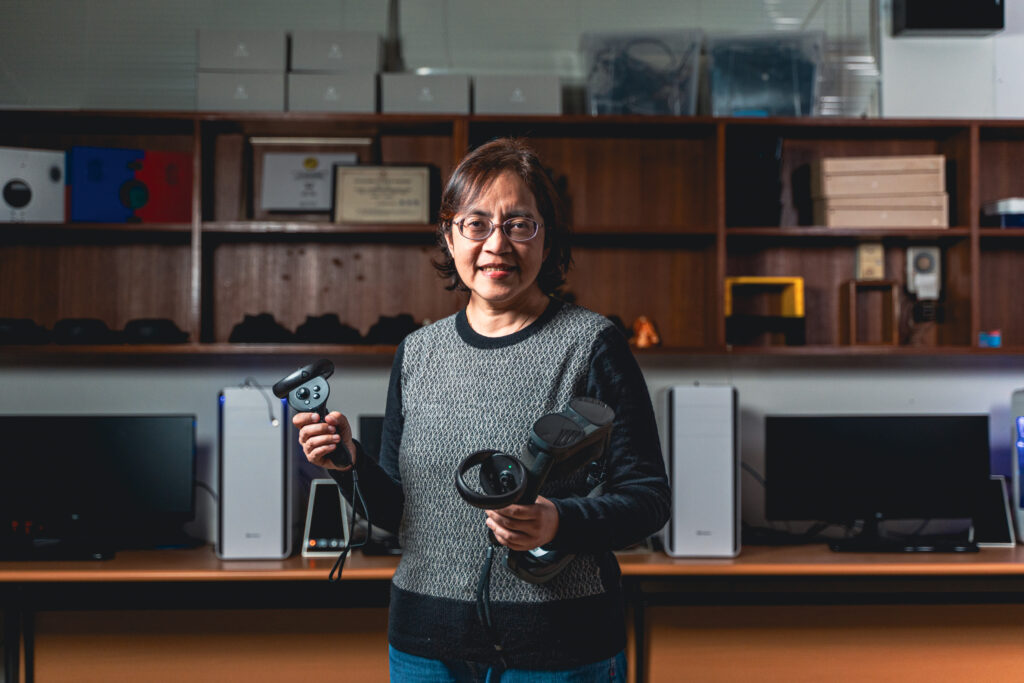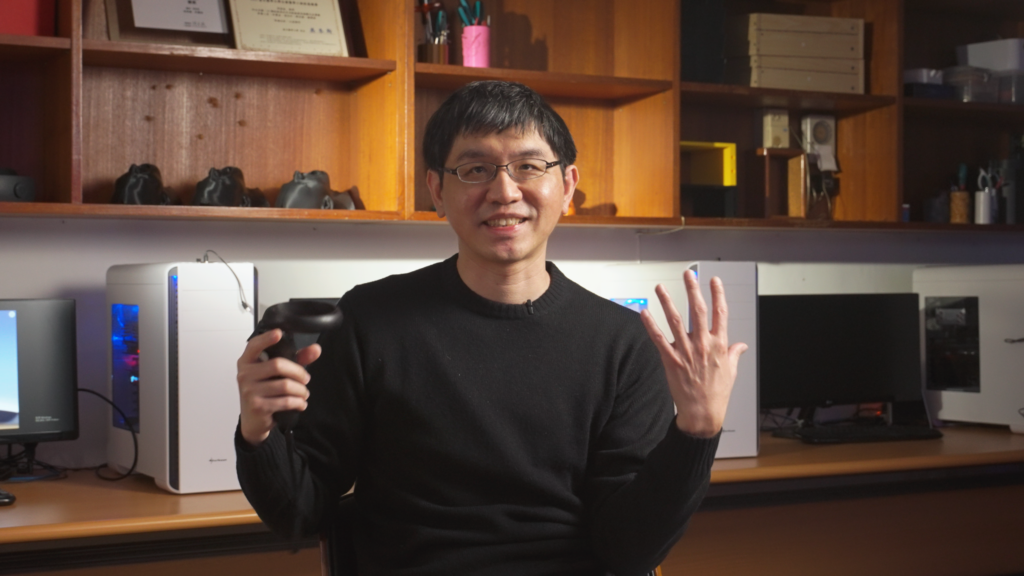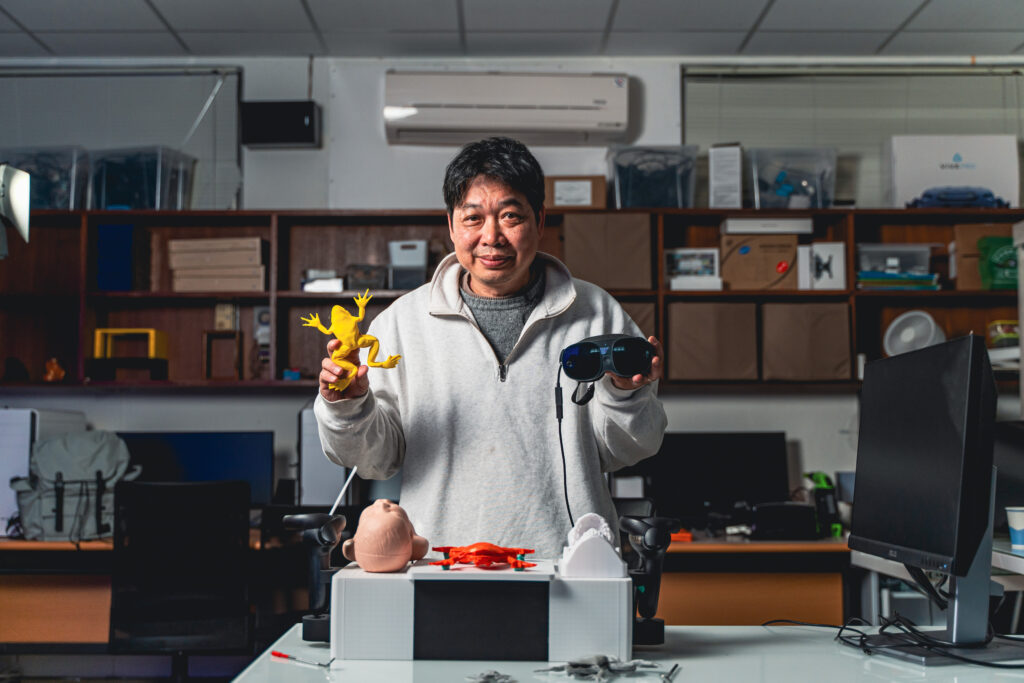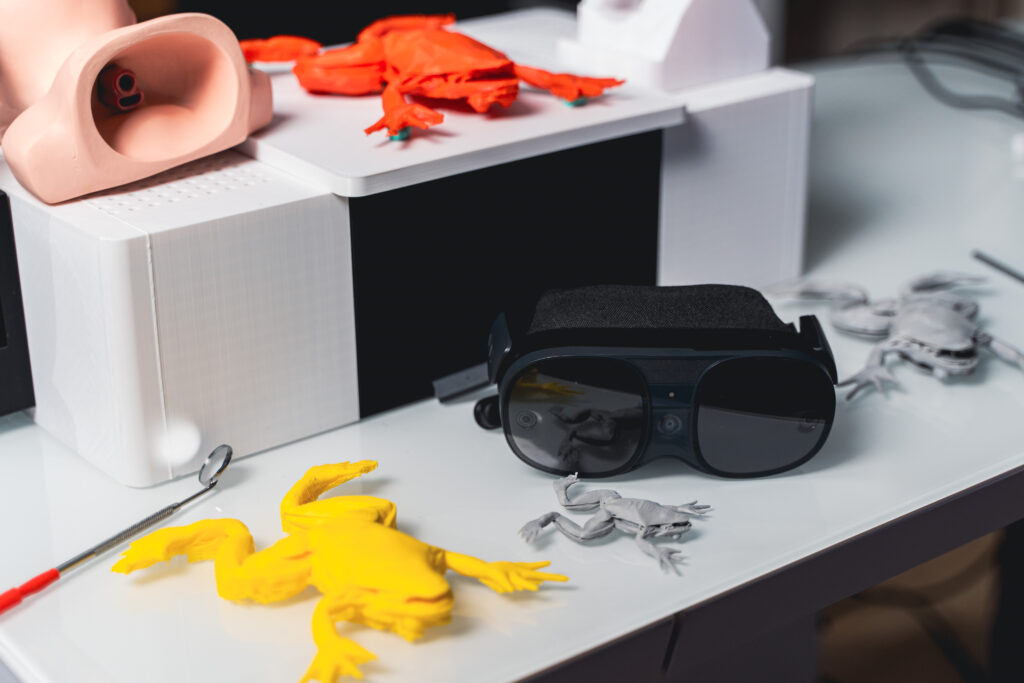▲ Intro video demonstrating how NYCU integrates VR technology to enhance medical education, improving learning while reducing reliance on animal experiments ©NYCU ELITE
Since the advent of Virtual Reality (VR) technology, a growing effort has been made to harness its immersive capabilities as a catalyst for educational innovation. Since September 2022, National Yang Ming Chiao Tung University (NYCU) has introduced VR technology into the live animal dissection experiment course, which has won the Featured Course Award—Outstanding Award in NYCU’s 112th academic year. The University also aims to expand VR applications into neonatal intubation, oral care, and minimally invasive surgery, continuously advancing the development of VR-based medical teaching materials and training systems. By integrating virtual reality with interdisciplinary teaching and technology, these efforts are expected to drive the transformation and advancement of global medical education.

VR Revolutionizes Physiology Laboratory courses: Not only by “Reducing” but also by “Replacing.”
In February 2022, a pivotal turning point in integrating VR technology into muscle physiology teaching arose from a conversation between Professor Yi-Hsuan Lee of the Department and Institute of Physiology and Professor Fu-Song Hsu, a new faculty of the Institute of Communication Studies, during the New Faculty Orientation Retreat. With nearly thirty years of teaching experience in physiology, Prof. Lee discussed the future of animal experiment courses, while Prof. Hsu, a newcomer specializing in VR/AR/MR technology, shared his expertise. They clicked instantly and decided to try to bring VR technology into the live frog dissection in the muscle physiology class in the hope of reducing the number of frogs’ “sacrifices” in the animal experiment, which became the starting point of their collaboration.
From the historical perspective of physiology development, although frogs have always been an important animal model and have been used in most classical physiology experiments, with the global research on the physiological mechanisms of frogs reaching completeness, the use of frogs in biomedicine is now almost exclusively limited to teaching. In addition, frogs are no longer supplied by lab animal centers or biotech companies, making them increasingly difficult to obtain. In the future, they may even face the dilemma of not being able to buy frogs for experiments. Prof. Lee said, “The choice of using VR technology for frog dissection experiments is not only for ‘reduction,’ but also for the long-term development of ‘replacement.’ The technical problems of animal experiment teaching can be solved by VR technology.”

How Immersive Learning is Driven Lies in How the Curriculum Process is Designed
How to utilize VR technology to achieve the learning objectives of animal experiments is the first and foremost issue for the two professors after forming the teaching team. Prof. Lee said, “Although Physiology Lab. is a required course in many biomedical departments, there are always students who do not like or are afraid of animal dissection, resulting in affecting their learning effect every semester. With its high sense of immediacy, Immersive Virtual Reality (VR) enables students to conduct animal experiments in a virtual environment, reduces psychological pressure, and can be operated by every student, thus achieving learning objectives universally.
However, introducing VR technology into the curriculum also faces many challenges. Prof. Hsu shared, “Research has shown that the higher immersion of Virtual Reality does not guarantee a better learning effect.” In the Physiology Lab. course, most students are new to VR, and the novelty of the equipment often makes them forget the learning objectives. Therefore, how to bring back the students’ attention is a crucial part of designing the course. For example, when operating, students are asked to complete tasks within a certain time frame. Prof. Lee added, “In addition to the VR tools, we also focus on the customizing design of the process. Students’ interaction and feedback must be taken into consideration. Thanks to Prof. Hsu’s innovative ideas and design, the course’s current presentation is an accumulation of practical experience.” In addition, she also emphasized, “Because it is difficult to immediately modify the VR software in a short period of time, we chose to start from the course process and the implementation method to adjust it flexibly.”

In terms of technological enhancement, Prof. Lee pointed out, “The frog experimental dissection scene must be as realistic as it should be.” Initially, the simulation fell short of real-life accuracy, but as the team gradually optimizes the technology, it is expected to add physiological parameter measurements, incorporate other learning elements, and even extend the possibilities of new applications in the future. Dr. Feng-Yi Hsu of the NYCU’s VR Center has addressed key needs in medical education by creating a 1:1 virtual frog and collaborating with the R&D team to improve hand interaction for greater realism. Generation Z students have also come up with innovative ideas, including multilingual instructors, error scenarios simulations, zoom-in/zoom-out functionality, and even designs that allow users to “walk into” organs—ideas that will become important references for future VR technology development.
Interdisciplinary Integration for Bidirectional Teaching and Learning: Benefit Teachers, Students, and VR Center
The Physiology Lab. course has achieved remarkable results in just two years. This is not only due to the efforts of the teaching team but also to the ingenuity of interdisciplinary co-learning, grants from the Center of Teaching and Learning Development’s “Grants to Motivational Teaching” and strong support for the hardware facilities, technical assistance from the VR Center, and the proactive commitment of graduate students from the Department & Institute of Physiology and the Institute of Communication Studies who serve as teaching assistants. Prof. Lee explained the course is taught in a joint class between the Department of Nursing and the Department of Biomedical Engineering, adopting a mixed-group approach to encourage students to communicate and collaborate, fostering more discussions and idea sparkles during group presentations. “Interpersonal interactions and interdisciplinary communication in the learning process need to be facilitated by the course design, and this course is a starting point,” she emphasized.

See the Future in VR Animal Experiments: Virtual Reality Integration Could Benefit Humanity
VR/AR training is already available in many healthcare systems to enhance clinical proficiency and reduce error rates among healthcare professionals. Prof. Hsu believes VR is like a simulator that puts the trainee into a specific situation to enhance practical skills. Prof. Lee responded that the introduction of VR technology into the Physiology Lab. course not only familiarizes students with the technology but also strengthens the curriculum by making it a required subject. She emphasized, “As VR becomes more prevalent in the workplace, educators must integrate it effectively into the curriculum.” To help students understand the importance and future trends of classical physiology experiments, the Department & Institute of Physiology has invited alumni to share applications of VR in the physical therapy practice.
Regarding the necessity of retaining animal experiments, Prof. Lee pointed out that VR or video can effectively replace the academic part without compromising learning outcomes. She emphasized that the “immersive” nature of VR technology can also realize the “hands-on” required by physiology. However, when replacing animal experiments with VR, students need to understand the care for animals and life experience. How do we avoid the problem of “too fake” or “everything is virtual” and the limitation of a single situation in the experiment site? Dr. Feng-Yi Hsu proposed the concept of “virtual-reality synchronization”. Through the simultaneous operation of the physical frog model and the VR frog experiment, combined with the storytelling design, students can gain a deeper understanding of the structure of the frog’s tissues, acquiring more physiological knowledge.

NYCU’s application of “virtual-reality synchronization” and VR storytelling in medical training has sparked innovative ideas. The team is developing VR teaching aids for neonatal intubation to address a 40% failure rate due to insufficient training. Dr. Feng-Yi Hsu emphasized that synchronizing virtual (VR) and physical models will enhance intubation training and expand into oral care with the College of Dentistry. Future plans also include applying this technology to minimally invasive surgical training. NYCU is committed to promoting the comprehensive innovation of medical education by upgrading VR technology and applying it to teaching materials and the hospital market, creating new values of interdisciplinary integration and opening up a brand-new chapter for cultivating future medical talents.

Special thanks to Yao, Hsiao-Chun (Associate Coordinator of the Department and Institute of Physiology) and Chen, Yi-Jing (Associate Coordinator of the Department and Institute of Physiology).
Interview | Lan, Li-Hsia
Translation | Yi-Chen Emily Li
Editing | Hsiu-Cheng Faina Chang
Photography | Hao-Yun Peng and Zong-Han Lyu / ZDunemployed Studio
